All your cooking equipment conundrums, answered
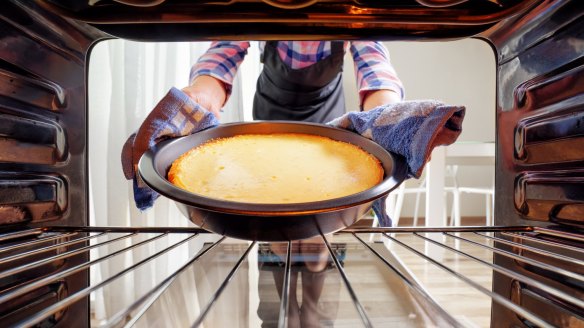
The best of Brain Food from 'hot spots' to woks.
Ovens
What is an oven "hot spot"? K. Gavin
Thank goodness this has nothing to do with Wi-Fi. All ovens are different, with different thermodynamics. Hot air moves about ovens in different ways and some parts of the oven are hotter than others. This could mean that on a tray of biscuits, some will be darker than others, or that a corner of slice will bake faster than the opposing corner. To test where your oven's hot spots are, take a baking tray and evenly lay out slices of plain white bread, making sure the spaces between them are even. Bake in an oven preheated to 180C for five to 10 minutes until most of the bread is brown. If the bread is evenly brown then you don't have a problem with hot spots. If one corner or the back is browner than the front, this indicates you have a hot spot. This means that when baking you will have to turn the baked goods around while the bake is under way. To avoid collapsing cakes, do this after the halfway mark, after the cake has risen.
Should I assume all modern recipes quoting oven temperatures would be for a fan-forced oven? C. McCarthy
Using ovens should be simple. But it is not. It is a bit like Canada. Canada is a perfectly normal country except it has two languages. English and French. Every time you write something in Canada, from serving suggestions on maple syrup bottles to handling instructions for beavers, it has to be written in both languages. Writing recipes involving baking or roasting these days is much the same. Authors should supply temperatures for conventional ovens followed by temperatures for fan-forced ovens, as in 180C/160C fan. But often they don't, giving only the conventional temperature. Home cooks need both because there is a big difference between how conventional ovens and fan-forced ovens work. In traditional ovens the gas flame or electric element heats the air and walls of the oven. In a conventional oven the food is cooked by heat radiated from the stove surfaces and from the hot air. In a fan-forced oven the hot air is blown towards and around the food, constantly blowing off the cooler air in contact with the food. Fan-forced ovens therefore cook faster. Cooking temperatures for fan-forced ovens are roughly 20C lower than those for conventional ovens but with the same cooking time. At lower temperatures this difference is less, 110C/100C fan. Conversely, at higher temperatures the difference is greater, 250C/220C fan. As all ovens are different please consult the manufacturer's manual, s'il vous plait.
When recipes say to put food into the oven at a certain temperature, they never say whether to put it on the bottom, top or middle shelf. W. McNulty
Unless stated otherwise, assume the recipe author intended you to place the food in the centre of the middle rack. One small tip: as many ovens have hot spots, turn baked goods such as cakes and biscuits around 180 degrees in the final quarter of the baking time to avoid one side browning more than the other.
"Don't waste electricity by preheating to cook your scones. Put them in cold and they'll be cooked by the time the oven is hot," my brother-in-law said. I have never tested his theory. Is he correct? T. Frost
Well, T. Frost, we offer a great service here at the Brainfood Institute*. We have a test kitchen** in which we can conduct research. We, by which I mean I, made a batch of scones on your behalf, placing them in a cold oven, which I turned on to 220C, the recommended baking temperature. Instead of taking the recommend 12-15 minutes to bake, at which stage they were still doughy, they took 25 minutes to cook through. I then made an identical batch and baked them in a preheated oven and they took the prescribed 15 minutes to cook. They were almost identical in appearance, flavour and texture. Assuming it takes 20 minutes to preheat an oven, the method your brother-in-law suggests saves 10 minutes' worth of gas or electricity. This is fine for scones but don't try this with lighter cakes or bread, where the burst of heat expands the gas trapped in the batter or dough respectively to make the product rise before the gluten hardens to form the crust.
Knives
I have a nondescript set of six kitchen knives, which invariably lose their sharp edge and become frustratingly blunt. This is despite using both a stone and a steel in an attempt to keep them razor-sharp. P. Fenton
I have two young children. When they have been exposed to a TV ad and ask for some product/toy/visit to an attraction, my reply is, "Anything you really need is never advertised on the telly," or something like that, which they ignore anyway. Never buy knives advertised on television, as they usually go blunt once the "on air" light goes off. In life you need one good knife, such as a German- or Japanese-made knife with the blade and handle forged from a single piece of steel. Start off with an eight-inch chef's knife. The true secret to sharp knives is behaviour. Susan Hawes of Scullerymade in Melbourne says, "Once a fortnight you need to sharpen your knife on a stone using honing oil. Then, the crux of the matter is that every time you use, you remove your knife from the block or magnetised strip, and you must sweep the blade over a steel, six to eight times on each side of the blade. The knife should be angled 18 to 20 degrees from the stone." For knife classes, try Chef's Armoury in Sydney and Melbourne; Paris International Cooking School in Sydney; and, in Melbourne, the Essential Ingredient.
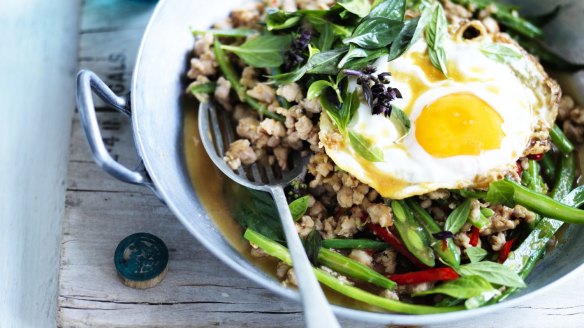
Pans and woks
Can I use cooking spray on non-stick frying pans? R. Vidler
Yes. But the lecithin in the spray may cook on and can cause build-up and hinder the non-stick properties of the surface. Also consider some manufacturers' warranties may become void if spray is used. Some retailers suggest spraying the food itself before adding it to the pan. The very idea, however, appals me. A smear of olive oil on a not-too-hot steel pan works just as well.
I am buying some pans and am thinking of non-stick. What are the do's and don'ts? T. Walsh
Mostly don'ts. Don't use harsh abrasives. Don't stir food with a metal spoon. Don't store any other pans on top of them as they will scratch. Don't put hot pans in cold water. Don't clean in the dishwasher. Don't cook high-acid food over a high heat. I still have my first frying pan that I bought when I moved out of home 25 years ago. It is steel. I never wash it with soap, just steel wool. I apply a little oil when I finish washing it and it has a patina that allows me to cook pancakes without using oil or butter. During that time, I have thrown out three non-stick frying pans.
How do I "season" a cast-iron pan? G. Raymond
With the rise of non-stick frying pans and stainless steel, seasoning a cast-iron frying pan, wok or cast-iron pot is a vanishing skill. Seasoning is the process of creating layers of polymerised oil on top of the cast iron. This layer of cooking oil is heated and changes to form a plastic-like shield over the iron. To do this at home, take your new pot, pan or wok and thoroughly wash it with hot water and detergent to remove any grease from the factory. Dry. Preheat the oven to 180 degrees. With a brush, coat the inside of the vessel with sunflower oil and place upside down in the oven with a drip tray in the rack below. Bake for two hours, carefully recoating the pan after 30, 60 and 90 minutes. Allow to cool. Voila! A seasoned pot.
I have a cast-iron wok that used to be non-stick many moons ago. Is it possible to make it non-stick again? And how? S. Kong
We had a cast-iron wok we used while camping in the bush on a family farm. We then had kids and didn't go camping while the kids were toddlers. When we returned after half a decade the wok was there but was rusty. I took to it with a wire brush until it was bare metal again. I threw it on the fire and slathered it with vegetable oil until there was enough smoke to excite the interest of the local volunteer firies. I kept brushing the oil up the sides of the wok using an old newspaper. While this was happening, the oil was creating a polymerised coating, a surface of hardened oil. With care, a cast-iron pan seasoned this way will remain non-stick as long as it is washed in hot water without detergent.
How should I clean my wok? A. Rehn
I put in a call to chef Victor Liong of Melbourne's Lee Ho Fook. He said: "When you buy a new wok it is covered with a thin film of mineral grease so the steel doesn't rust. Remove this by filling the wok with water and boiling the grease off, then scrubbing the wok with detergent." This is the last time you will ever use detergent on your wok. He says to then heat the wok until very hot and create a layer of oil by spraying with canola spray and wiping off. Repeat this process seven to eight times. "You know the wok is ready when you crack an egg into it and it slides around the bowl," says Liong. He says never use detergent on your wok.
When I've finished cooking I wipe my fry pans clean and season them with leftover fat or oil. This drives my wife mad. She puts them in the dishwasher. What should I do? P. Checketts
Good steel fry pans are the best value for money. They are lightweight, durable, cheap, easy to clean and virtually non stick but, like gremlins, do funny things when submerged in water. They rust. That layer of fat you're putting on the pan is protecting it from air, the oxygen in which rusts the iron in the steel. Dishwashers strip away this layer of fat and the patina of polymerised fat formed by heat. Don't put steel pans in the dishwasher. Simple.
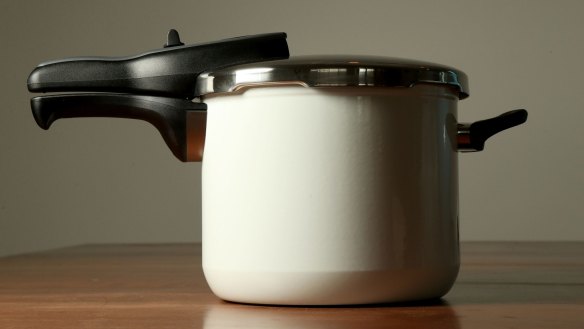
Slow- and pressure-cookers
I want to cook a casserole in the slow-cooker. I have read that it is better to sear meat before putting it in any sort of casserole dish but I am not sure of the advantages. P. Watson
Flavour and colour. It all comes down to our old friend the Maillard reaction, which sounds like a lame spy novel but is actually an essential part of day-to-day flavour creation in the kitchen. When you sear meat in a hot pan the amino acids and sugars in the meat rearrange themselves to create new compounds that are not only flavoursome but more richly coloured. So yes, you can throw everything into a slow-cooker and turn it on but the dish will never be as attractive as one made with meat and vegetables that have been browned first. Appliance-makers understand this and there is a new generation of slow-cookers on the market that have a sear function.
Are pressure cookers still available or have they gone out of fashion? M. Franz
They were the must-have kitchen gadget of the mid-20th century, the Thermomix of their day: cast iron or aluminium pots with tight-fitting lids and rubber seals. As the temperature inside increased so did the air pressure, reaching about 15 pounds per square inch before the automatic valve kicked in, sending a stream of steam into kitchen accompanied by a sibilant hiss. Inside, the boiling point of water increased from 100C to 121C, rapidly reducing the cooking time of the contents. In Australia they were popular from the postwar period until about the late 1970s. The death knell for the pressure cooker was sounded by the ping of the microwave oven's bell. They didn't, however, go the way of the K-tel Blitzhacker, Slice-O-Matic or Hamburger Patti-Stacker, which are museum pieces occasionally found on eBay. Pressure cookers of one sort or another have remained popular in large kitchens. In places such as Madrid they never went out of fashion, being used every lunchtime to make callos, the classic stew of tripe and chickpeas. In Australia, pressure cookers are making a comeback with food-loving brides putting them on their wish lists. You can buy pressure cookers in large kitchenware stores, DJs and Myer.
My pressure cooker is set, on its highest setting, to 1 bar. What does this mean? J. Myers
Many of us share memories of a science teacher with patches on their jacket elbows and a salt-and-pepper beard trying to teach us about air pressure. We may even recall being taught that, at sea level, the boiling point of water is 100 degrees C. And do you remember that the higher in altitude one goes, the lower the air pressure and the lower the boiling point of water? Well, Ms Myers, your pressure cooker doesn't let water vapour out until the air pressure inside has reached 1 bar, which is 15 pounds per square inch or 100 kilopascals above air pressure at sea level. This means that the boiling point of the water inside the pressure cooker is increased to 120 degrees, making food cook faster.
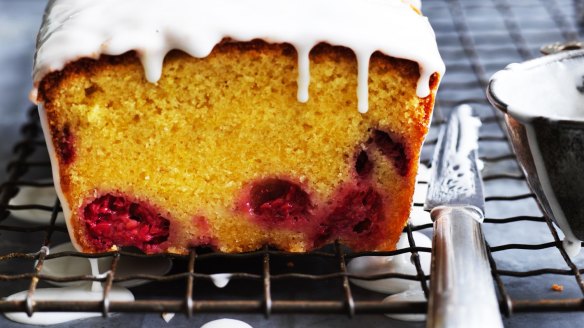
Baking
What is the correct way of maintaining cake tins? D. Rose
I have a friend who owns a bakeware shop and she has an expression that goes: "In the kitchen there is only one appliance that one should put a cake tin in, and that is an oven. Dishwashers are for dishes." Good bakeware is both conductive of heat and has mass to retain it. Often good bakeware is made from a material with a high iron content, such as steel, and is tin-plated. Put iron and water together and you get rust. Put tin plating in a dishwasher and the chemicals can strip away the thin layer of tin. In fact, most cake tin hire companies – yes, they do actually exist – will not refund your deposit if you wash a hired cake tin in a dishwasher. So wash cake tins in hot water to which a little detergent has been added, scrub with a bristle brush – not an abrasive pad – dry and allow to sit in the oven as it cools down from your baking to dry out all the nooks and crannies.
I was always told never to wash the sifter, as the fine mesh may rust. J. Brewster
Your letter sparked a beautiful auditory memory of baking with my Aunty Sue and the rasping metallic sound the paddles of her sifter made when she prepared her banana cake. It's not the washing but the drying, or lack thereof, that causes rust on all baking equipment. Dry your sifters, cake tins and trays in the dying heat of the oven after your oven is off and the baking is done.
What sort of baking trays and tins should I buy to bake fabulous biscuits and cakes? I am a mum to two and just getting the baking bug. A. Macleod
There is nothing more rewarding than feeding the family your own baked goods. Although there are many variables in baking that will determine the outcome of your cakes, an investment in quality bakeware will help you produce consistently good results. Firstly, do not buy bakeware from the supermarket. It is cheap for a reason. Today's cheap cake tin is tomorrow's outside dog bowl. Head to a good food store or bakeware specialist. A heavy-based aluminium baking tray with upfolded lips on three sides not only cooks the bottoms of the biscuits evenly but also allows them to slide off the end of the tray once done. Match the size of your cake tins to the sizes of the cake tins called for in any recipe books you may have. Generally, cake tins in most cake books are about 20 centimetres to 23 centimetres and round. Add to the list a heavy-duty cake rack. Cheap ones buckle quickly and will affect the shape of the cake. An uneven cake is harder to ice. Buy a roll of good quality baking paper and you're set. Wash bakeware well and dry in the oven as it cools.
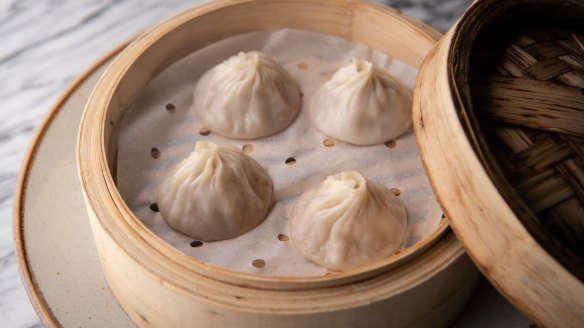
Assorted
How do I stop dumplings from sticking in the bamboo steamer? D. Charles
How much do you love those frozen dumplings from the Asian shops? I did struggle in the early days with their bottoms sticking to the bamboo in the steamer. I went to the local yum cha house and looked at how they stopped their har gow and siu mai from sticking – baking paper. Take a square of non-stick baking paper. Fold it diagonally. Repeat. Continue until you have a wedge-shaped piece of paper. Place the tip of the wedge in the centre of the steamer basket. Mark where the edge of the steamer meets the paper. Cut. Take a hole punch and make a dozen or so holes in the folded paper. Unfold. It will be a round doily with as many holes as Al Capone's car door. Lay the paper inside the bamboo steamer, place the dumplings inside, pop the steamer over a pan of simmering water and turn up the heat.
What's the best piece of equipment to deep fry in? K. Lane
A lot of my chef mates deep fry in their wok. It heats quickly. It is very easy to scoop out extraneous pieces of darkened food. There is less chance of a bubble-over and less chance of ensuing fire as the bubbles spread out across the flared rim. It is easy to keep food moving around in the oil. The flared edge also catches droplets of fat flying out from the oil. The big drawback is the relatively small base of the wok that, without a wok burner, makes it less stable than a broad based pan.
Can I cook every day in my new copper saucepans? C. Belinsky
No. You and your family will be at risk of copperiedus or copper toxicity. The symptoms are not nice and include vomiting, jaundice and haematemesis and melaena. (Look up the last two if you need to. Not the type of thing we want to print in the food section.) You will be even more at risk if you cook acidic food in the pans. Copper-based pans are fine if the cooking surface is made from stainless steel. Copper is great for conducting heat but really hard for your kidneys to expel in high levels.
When should I throw out my plastic microwave containers? S. McKinnon
A hippie friend, who doesn't have a lot of time for microwave ovens, once described mine as Satan's Hotbox. He was referring to the way that some additives used in making plastic containers migrate to food. This happens at high temperatures, and fatty foods are particularly capable of absorbing these compounds. The CSIRO suggests that one should discard plastic microwave containers "when the surface shows any signs of breaking down". It also advises against letting plastic film come into contact with food and to not use ice-cream or margarine containers in the microwave as the "low melt temperatures of these plastics may result in migration of undesirable contaminants into the food or in physical disintegration of the containers themselves".
Can I soften butter in the microwave? K. Rundle
If it is for something like garlic butter, no problem. If you're making a cake, no. Warm butter doesn't cream with sugar very well. Microwaves do not heat evenly so some parts of a block of butter will be warmer and almost runny and other will still be hard and cold. Soften butter at room temperature for several hours before baking. Cutting it into small cubes will help it soften faster.
Are baking stones worth the money? T. Righetti
Yes. As long as they don't cost an arm or leg. Basically a baking stone, or pizza stone, is a block of heat-retaining mass made from stone or ceramic sitting in the oven. It's placed in a cold oven on the lowest rack and allowed to heat for at least 30 minutes. The stored heat is soaked up by the cold dough, causing protein and sugar in the flour to caramelise and the carbon dioxide in the dough to expand rapidly, making the loaf rise. Stones create really good crust on the bottom of a loaf of bread. They also help create crispy pizza bases.
Appears in these collections
The best recipes from Australia's leading chefs straight to your inbox.
Sign up- More:
- Chefs' kitchens
